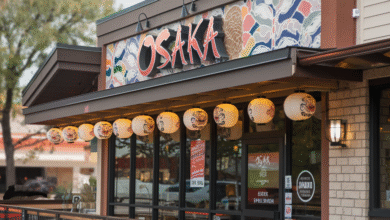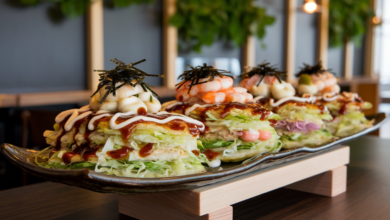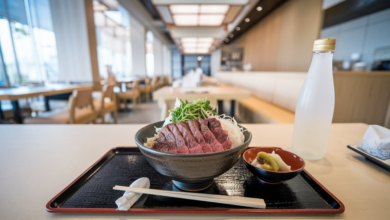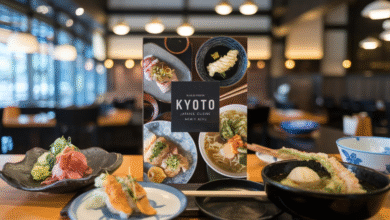Tokyo Negi: The Sweet Onion Secret Loved by Japanese Chefs
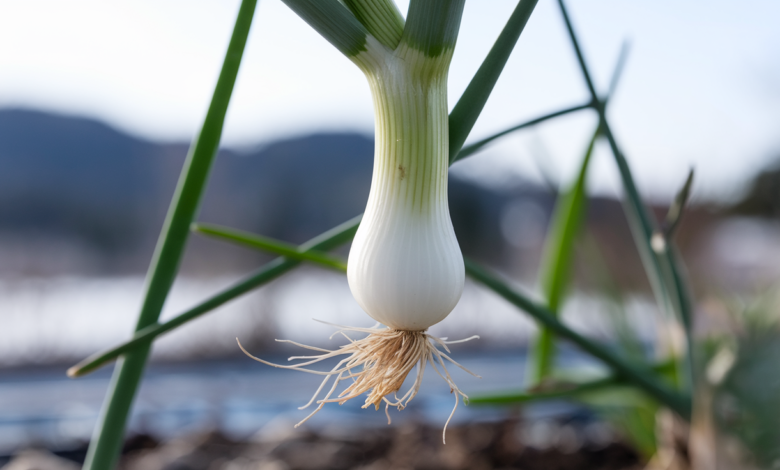
Tokyo negi is not just a regular green onion. It is a long, white, juicy vegetable with a rich, sweet taste when cooked. This Japanese onion has been around for hundreds of years, and many chefs and home cooks love it for soups, grills, and hot pots. The white part is strong when raw but becomes soft and sweet after cooking. You will see it in ramen, miso soup, and even fancy restaurant meals. People in Japan call it “Tokyo negi,” but it is also known as “Japanese long onion” or “Shiro negi.” It grows mostly in cold places and takes time and care to harvest, which makes it special and full of flavor.
If you’re wondering what makes Tokyo negi different from regular green onions or scallions, you’re not alone. Its white stalk is much longer and thicker, and it doesn’t grow bulbs like other onions. Tokyo negi also has a higher sugar level than many fruits, which is why it tastes sweet when cooked. Japanese farmers grow it with love, and only a few farms still produce it today. This makes Tokyo negi a seasonal treasure in Japan and a luxury in other countries. Whether you are a food lover, a home cook, or a beginner learning Japanese recipes, using Tokyo negi in your dishes can change the flavor completely. Let’s learn more about how to find, use, and enjoy this amazing onion!
What Is Tokyo Negi and Why Do Japanese Chefs Love It?
Tokyo negi is a special kind of green onion from Japan. It looks like a long white stick with some green at the top. Chefs in Japan love it because it tastes strong when raw but becomes soft and sweet when cooked. It adds a deep flavor to soups, stews, and even grilled dishes. The white part is thick and juicy, and the green part can be used like spring onions. Japanese chefs often use Tokyo negi in hot pot dishes, ramen, or grilled with a little salt and oil. It makes food taste better without needing too many spices. People also like it because it can remove the strong smell of fish or meat when cooking. That’s why this long green onion is a must-have in many Japanese kitchens.
Tokyo Negi vs Green Onion: What’s the Real Difference?
Many people think Tokyo negi and green onions are the same, but they are very different. Tokyo negi has a longer and thicker white stem than regular green onions. It grows slowly and needs cold weather, which gives it a sweet taste when cooked. Green onions have more green parts and are softer overall. Tokyo negi is stronger when raw, while green onions are milder. You can cook both, but Tokyo negi is better for dishes that need long cooking times like soups or braised meals. The flavor of Tokyo negi goes deeper into the food. Green onions are better for toppings or light stir-fries. So, if you want your dish to have a rich, sweet onion flavor, Tokyo negi is the better choice. That’s why Japanese chefs use it more in traditional meals.
Easy Ways to Cook with Tokyo Negi at Home
Cooking with Tokyo negi at home is fun and easy! You can grill it with a little soy sauce and oil. It becomes soft and sweet when cooked like this. You can also slice it and put it in miso soup or noodle soup. It adds great flavor and makes your soup tastier. Another easy way is to stir-fry it with chicken, tofu, or eggs. Just cut it into pieces and cook in a pan for a few minutes. You can even roast it in the oven with a bit of butter or olive oil. If you want something fancy, make Tokyo negi miso sauce to serve on rice. Remember, the white part is best for cooking, and the green part is good as a topping. Try one new dish today, and you’ll see how yummy it is!
Where to Buy Tokyo Negi (Even If You’re Not in Japan)
If you don’t live in Japan, don’t worry—you can still find Tokyo negi! Start by checking local Asian or Japanese grocery stores. Sometimes they sell fresh Tokyo negi in the vegetable section. If not, try the frozen section or even dried versions for soups. Another easy way is to shop online. Many websites sell Japanese vegetables and ship them to your door. Look for trusted sellers that keep the vegetables fresh. Some farmer’s markets may also carry Japanese onions if they have special imports. If you can’t find Tokyo negi, ask the store if they can order it. You can also join local Japanese food groups on social media to ask where others buy it. It might take a little search, but it’s worth it for the taste!
Delicious Recipes You Can Try with Tokyo Negi
There are many yummy recipes you can make with Tokyo negi. A favorite one is grilled Tokyo negi—just brush with oil and grill until golden. You can also put it in tonjiru, a pork and vegetable miso soup. It makes the soup sweet and warm. Add Tokyo negi to yakitori, which is grilled chicken on sticks. The soft, sweet onion tastes great with meat. You can even make a simple Tokyo negi miso dip for rice or veggies. Stir-fry is another fun dish—just cook it with tofu, mushrooms, or chicken. Try using Tokyo negi in a rice bowl for extra taste. If you like eggs, add chopped negi in an omelet. These recipes are easy and perfect for beginners. Start small and enjoy the flavor!
Health Benefits of Eating Tokyo Negi Regularly
Eating Tokyo negi can help your body in many ways. It has vitamin C, which helps you stay healthy and fight colds. It also has vitamin K, which is good for your bones and healing cuts. The white part has natural oils that help your tummy feel better and can stop bad smells from food. It has fiber too, which helps your stomach work well. Tokyo negi is low in calories and fat, so it’s great if you’re watching your weight. Some people say it can help the heart and make your blood clean. It also gives your food flavor, so you don’t need too much salt. Eating it in soup or with rice is a smart way to stay healthy and happy!
How to Clean and Store Tokyo Negi the Right Way
Cleaning Tokyo negi is easy but important. First, rinse it under cold water to remove dirt. Peel off any dry or bad layers. Use a knife to cut off the roots at the bottom and trim the green top if it looks old. You can use both the white and green parts. Pat it dry with a paper towel. To store, wrap it in a damp paper towel and put it in a plastic bag. Keep it in the fridge and it will stay fresh for about a week. If you want to keep it longer, slice it and freeze it in a sealed bag. You can also freeze cooked pieces. Label the bag so you remember the date. Clean Tokyo negi helps your food taste better and keeps you safe.
Traditional Japanese Dishes That Use Tokyo Negi
Tokyo negi is a star in many Japanese meals. One favorite dish is “nabe” or hot pot, where the onion cooks slowly with meat, tofu, and veggies. It adds sweet taste and smells nice. Another dish is miso soup with Tokyo negi—it gives extra flavor and feels warm on cold days. You will also see it in yakitori, where it’s grilled on skewers with chicken. Ramen is another big dish where Tokyo negi is often chopped and used as topping. It makes the noodles taste better. Some families use it in simmered dishes with soy sauce and sugar. Tokyo negi is also tasty in tempura when fried. These meals are easy and full of flavor, and Tokyo negi is a big reason why they are loved.
How Tokyo Negi Became a Global Ingredient
Tokyo negi started in Japan, but now people all over the world love it. It became popular because chefs outside Japan started using it in their cooking. They liked the sweet taste and how it made dishes better. Now, more stores sell Tokyo negi or grow it in other countries too. It’s used in Japanese restaurants worldwide, from ramen shops to fine dining. Food lovers who try it want to cook with it at home. Cooking shows and food bloggers also talk about Tokyo negi, making more people curious. Some farmers outside Japan even started growing it for local markets. So today, Tokyo negi is not just Japanese—it’s a global kitchen star that brings a special flavor to any dish.
Fun Facts About Tokyo Negi You Didn’t Know
Did you know Tokyo negi can grow over two feet long? That’s taller than most bottles! Farmers in Japan use soil mounds to keep the stalks white and sweet. This process takes time and care. Tokyo negi is sweeter than many onions because it grows in cold weather. The colder it gets, the sweeter it becomes! In some parts of Japan, people eat it raw in salads or grilled at festivals. Also, Tokyo negi has been used for over 1,000 years in Japanese food. It’s so important that there are even songs and stories about it in old books! In some families, it’s a tradition to eat Tokyo negi during winter to stay healthy. It’s more than food—it’s a part of culture!
Conclusion
Tokyo negi is a yummy and healthy onion that makes food taste better. It’s long and white, and turns sweet when cooked. People in Japan love to use it in soups, hot pots, and grilled food. You can try cooking with it too, and your meals will feel more special and warm.
Even if you live outside Japan, you can still buy Tokyo negi. Try a store near you or order online. Use it in a soup, stir-fry, or grill it. It’s easy and fun. Once you taste it, you might want to cook with it again and again!
FAQs
Q: What is Tokyo negi?
A: Tokyo negi is a long, white Japanese green onion with a sweet taste when cooked.
Q: Can I use green onion instead of Tokyo negi?
A: Yes, you can use green onion, but the taste will be lighter and not as sweet.
Q: How do I cook Tokyo negi?
A: You can grill, stir-fry, boil, or roast it. It becomes soft and sweet when cooked.
Q: Where can I buy Tokyo negi?
A: You can buy it at Japanese or Asian markets, or order online from food stores.
Q: Is Tokyo negi good for health?
A: Yes! It has vitamins, helps digestion, and adds flavor without many calories.
